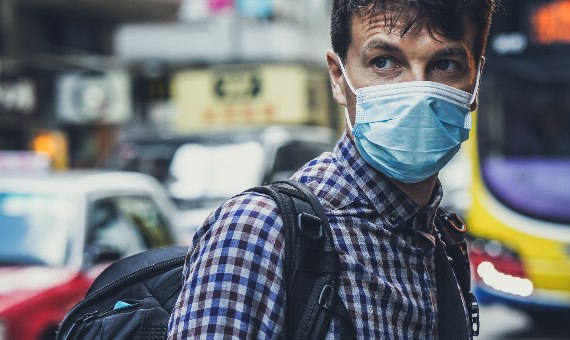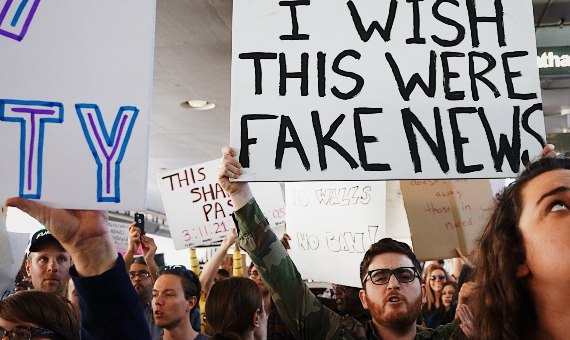COVID-19, the illness caused by the SARS-CoV-2 virus, has caused a pandemic that, in addition to representing an obvious threat to world health, has revealed another pathology that seems to have infected twenty-first century societies: disinformation.
For very good reason, the World Health Organization (WHO) has even coined the word “infodemic” to describe modernity’s epidemic of false information. In the summer of 2020, the WHO held its first conference on infodemiology, which the organization defines as the science dedicated to the management of information. More than 1,000 experts in fields as wide-ranging as medicine, epidemiology, law, journalism, and marketing, to name a few, convened to define, for the first time in history, the tools and strategies needed to head off this information-age plague.
The overabundance of information about COVID-19 is unprecedented, and it is precisely this overabundance that the WHO considers a fundamental factor when diagnosing an infodemic. With input from the conference, the WHO published a report that calls for evidence-based infodemic management interventions for this and future infodemics. Moreover, the United Nations has created the WHO Information Network for Epidemics, EPI-WIN, which better defines and disseminates evidence-based COVID-19 information, while tracking and responding to erroneous information, rumors, and urban myths.
THE MOST DANGEROUS LIES ABOUT COVID-19
It has proven to be true that the infodemic, like the COVID-19 pandemic itself, can be translated into numbers. A recent study, published in the American Journal of Tropical Medicine and Hygiene, points out that in the first few months of 2020, at least 800 people may have lost their lives as a result of misinformation about COVID-19. Another 5,800 may have been admitted to hospital, according to the MIT Technology Review, as a result of ingesting methanol or other cleaning products as an antidote to the virus.
The WHO has analyzed the origins of many bogus COVID recommendations that have spread across the Internet and has concluded that although many are not shared with malicious intent, they nevertheless pose a real health threat. Some examples include the false belief that the virus could be cured by using herbal eye drops or that disposable face masks could be sanitized using steam.
Professor of information science at the Universitat Oberta de Catalunya, Alexandre López-Borrull has analyzed the most significant falsehoods, those that have had the most impact during the COVID-19 pandemic. He singles out the first instances of fake news concerning the virus’ origins and its potential relationship with 5G antennas. “Wherever there is some uncertainty, where things are not known, fake news can easily be generated.”

Then there is Rocío Benavente, coordinator of the Maldita Ciencia (Damn Science) journalism project and a specialist in identifying false information in scientific domains; she considers the misinformation about mask use to be an exemplary case. “A good part, if not all of the problem is down to the fact that from the outset the information delivered by official sources changed; the message morphed from ‘the general population doesn’t need to use masks’ to ‘masks are required’,” Benavente explains. The journalist stresses that the fact that it was initially communicated that masks were not required, only for it to emerge that this recommendation was made based on a supply problem and not scientific evidence, contributed to the negative reaction people had when mask-wearing became obligatory in countries like Spain. “The result: a massive explosion of false information about face masks — that they cause oxygenation problems; that they increase the risk of contracting pneumonia; that they cultivate bacteria; and that they can ultimately trigger illnesses. And then there are those that go even further, like those that suggest masks are a way to subdue the general public, a way to control and silence dissenting voices.”
WHO’S BEHIND THE FAKE NEWS PHENOMENON?
One of the biggest questions that strikes anyone who has the common sense to stop and think about fake news is: who is behind these types of publications and what is their interest in spreading them? “Sometimes it’s the work of individuals acting alone for narcissistic reasons, gauging their ability to make news go viral, almost like an adolescent experiment,” López-Borrull tells OpenMind. But the professor believes there is a more important, more organized faction: “And we enter into an agenda of more manipulative groups who want to mobilize political or ideological passions. There are also media groups that feed on the ‘clickbaits’ — fishing for clicks — they are economically motivated to attract people to their websites with provocative, eye-catching titles.”
With regard to groups advancing denialism, which has gained traction as the COVID-19 pandemic has carried on, the professor believes that “in many cases these groups are trying to spread information in parallel with the official line, generating a mire of information where no one can believe anything, a categorically bad scenario in which extremist ideologies can flourish.” During the infodemic congress, the WHO also recognized that “impostor content” created by people passing themselves off as authorities and official sources have been successful at propagating rumors and spreading disinformation, many of which run counter to official advice. To face this threat, López-Borrull insists on a key strategy: scientific outreach. Scientists have to make their message accessible to the general public, using social media as one vehicle for communicating scientific facts.
THE ROLE OF SOCIAL MEDIA
Scientific misinformation is also a problem for social media networks, the principal vehicle for broadcasting these lies. User traffic is inherent to the social media business model, and ultimately it depends on the reliability of information disseminated across these channels: “A scenario in which no one believes anything is detrimental to the very nature of social media,” López-Borrull says.
Before the pandemic, a report released jointly by the Barcelona Medical Association and Catalonia’s Department of Health and Audiovisual Council decried the fact that 74 percent of the first 50 results in a search for “cure cancer” on YouTube returned pseudoscientific drivel. The WHO believes, in light of specific cases, social media platforms are responding in their own ways, with different policies like highlighting and prioritizing truthful content and seeking closer cooperation with fact checkers and authorities in order to remove disinformation.
“A scenario in which no one believes anything is detrimental to the very nature of social media,” López-Borrull says.
Putting numbers to the problem is revealing: a recent study by the human rights group, Avaaz, as cited by the MIT Technology Review, estimates that Facebook pages containing health-related misinformation generated approximately 3.8 billion views last year (in at least five countries). In April 2020 alone, these web sites reached up to approximately 460 million visits on Facebook.

In comparing the influence of official sources such as the WHO or the U.S. Centers for Disease Control and Prevention, Avaaz reveals that content from the top 10 websites spreading false information had almost four times as many estimated views on Facebook than the leading health institutions.
IT IS NOT JUST TECHNOLOGY: THE SOCIOLOGY BEHIND MISINFORMATION
What explains the explosive, fast-spreading nature of health-related fake “news”? A study published in Science, The spread of true and false news online, points to human behavior as the main factor behind fake news viralization. According to the researchers, fallacies spread more quickly and with greater reach than the truth. To such an extent, the study concludes that falsehoods are 70 percent more likely to be shared on Twitter, depending on their degree of novelty and how unusual they are.
Given this context, Rocío Benavente points out the contradiction in labeling something ‘fake news’ when often it has nothing to do with news: “it is content that fits with the way we want to see the world; content that is easier to consume than content that contradicts this view, and at times this can make us ignore whether something is true or not, as if veracity is secondary, when it should come first.” It is easier to believe that which reinforces the way we see the world, the journalist explains, which is why it is so important to be aware of our own biases. Furthermore, in a landscape mired in doubt and pervaded by fears — such as the one created during the COVID-19 pandemic — people grasp for certainty, and science cannot always provide it, Benavente concludes. “The only certainty has come from those very people who are misinformed, because if you knew what you were saying, you wouldn’t be able to assert it with such confidence.”
“This can make us ignore whether something is true or not, as if veracity is secondary, when it should come first,” Rocío Benavente.
Comments on this publication